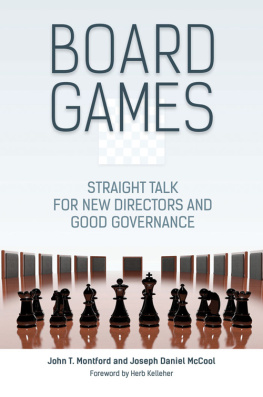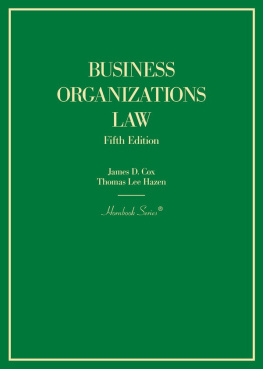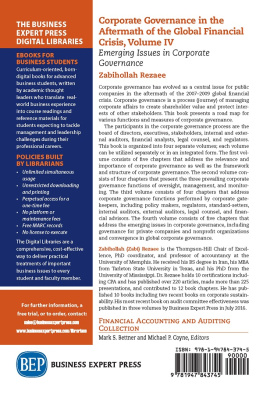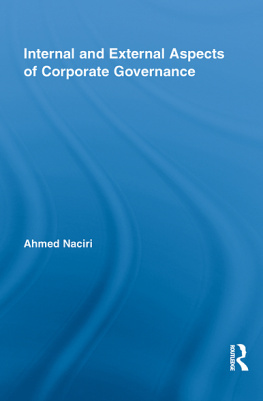I N 1966, WILLIAM SHLENSKY finally snapped. A long-suffering shareholder in a well-known public company, he had endured more than a decade of financial losses and noncompetitive performance. The company was a venerable institution, almost a century old and once the pride of all Chicago. But over the course of the previous thirty years, while its younger competitors harnessed technology to revolutionize the industry, the company hunkered down in its ivy-walled fortress. The president and CEO was one of Chicagos most famous businessmen, but he was also a stubborn traditionalist. Baseball is a daytime sport, he insisted.
Bill Shlenskys father had given him two shares in the Chicago Cubs when he was fourteen years old. It was a cruel gift that was more than just a lifetime of fruitless sports fandom; it was a bitter lesson in corporate governance. Over the next fourteen years, the Cubs never finished in the top half of the National League standings. In fact, they placed either second to last or last in half of those years, and managed only one winning season. To make matters worse, the Cubs futility was not confined to the baseball field. The company had not reported an operating profit in years.
By the mid-1960s, about 60% of all Major League Baseball games were played at night. Baseball under the lights had become extremely popular with fans, and most teams scheduled almost all of their nonholiday weekday games in the evening. The Cubs were the only holdout. On the south side of town, Chicago White Sox weeknight games averaged 19,809 fans in 1965. Cubs weekday games, by contrast, attracted a pitiful 4,770 baseball fans. Both teams managed decent crowds on weekends of around 15,000, but even this turnout paled in comparison to the Soxs weeknight games.
Shlensky believed the Cubs were caught in a vicious cycle: Their refusal to light Wrigley Field for night games compromised their ability to hire and develop talent, which in turn ensured losing teams that further depressed attendance. He was going to do something about it.
DEAR CHAIRMAN IS about shareholder activismthe moment when a public company investor is no longer content with being just another bum in the stands. For most people, owning stock in a large corporation is a passive pursuit. They will quickly sell out of an investment if they disagree with how the company is being managed. But some investors decide to actively engage the company to try to enhance the value of their shares. This book focuses on the dramatic moment when a shareholder moves from passive observer to active participant, and picks up a pen to plead his or her case.
Shareholder activism is not a recent phenomenon. As long as corporations have had public stockholders, there have been tensions between investors, boards of directors, and executives. Four hundred years ago, angry shareholders in the Dutch East India Company lobbied for expanded rights and accused directors of self-dealing. In nineteenth-century America, stockholders kept close watch on public companies that operated bridges, canals, piers, railroads, and banks. The railroads in particular saw many fights for control, including the acrimonious Erie War of the late 1860s. But the last hundred years in America have been the most turbulent period for corporate oversight, marked by power struggles between management teams and shareholders that have culminated in an era of unprecedented shareholder power. Today no public company is too big to be confronted. Every CEO and corporate director is a potential target unless they have secured voting control of the company.
How did this happen? Why did shareholders triumph in the struggle for corporate control? Who were the key players that ushered in this period of so-called shareholder primacy? If we want to understand the rise of the shareholder, I suggest we go to the sourceoriginal letters from the greatest investors ever to intervene in the management of public companies. These letters, and the stories behind them, tell the history of shareholder activism through the last centuryfrom Benjamin Grahams battle with Northern Pipeline in the 1920s to Ross Perots showdown with General Motors in the 1980s to the well-publicized exploits of todays fresh-faced hedge fund rabble-rousers. Well meet Proxyteers, conglomerators, and corporate raiders, and well see how large public companies dealt with them.
Ive chosen eight important interventions from history, featuring original shareholder letters:
BENJAMIN GRAHAM AND NORTHERN PIPELINE
Benjamin Graham letter to John D. Rockefeller Jr., June 28, 1927
In one of the first instances of shareholder activism led by a professional fund manager, Benjamin Graham tries to convince Northern Pipeline to distribute its excess capital to shareholders.
ROBERT R. YOUNG AND THE NEW YORK CENTRAL RAILROAD
Robert R. Young letter to New York Central shareholders, April 8, 1954
Proxyteer Robert R. Young wages war against William Whites New York Central in 1954, which Barrons calls the year of battle by proxy.
WARREN BUFFETT AND AMERICAN EXPRESS
Warren Buffett letter to President and CEO Howard Clark, June 16, 1964
The Great Salad Oil Swindle nearly topples American Express and sparks a minor revolt among its shareholders. Warren Buffetts investment in the company marks a turning point in his career.
CARL ICAHN AND PHILLIPS PETROLEUM
Carl Icahn letter to Chairman and CEO William Douce, February 4, 1985
After a brief interlude covering Jim Ling, Harold Simmons, and Saul Steinberg, we enter the corporate raider era to watch Carl Icahns Milken-funded frontal assault on hapless Phillips Petroleum.
ROSS PEROT AND GENERAL MOTORS
Ross Perot letter to Chairman and CEO Roger Smith, October 23, 1985
Pushed to the brink by poison pills and greenmail, institutional investors finally lose their cool when General Motors pays its largest shareholder, and one of the worlds greatest businessmen, to quit the board of directors.
KARLA SCHERER AND R. P. SCHERER
Karla Scherer letter to R. P. Scherer shareholders, August 4, 1988
The largest shareholder of R. P. Scherer is stonewalled by an entrenched CEO and a captive board of directors. She happens to be the CEOs wife, and the daughter of the companys founder.
DANIEL LOEB AND STAR GAS
Daniel Loeb letter to Chairman and CEO Irik Sevin, February 14, 2005
Daniel Loeb administers a brutal public hanging of an underperforming CEO. As the hedge fund industry matures, Loeb and his cohorts evolve from pesky gadflies to the kings of the jungle.
J. CARLO CANNELL, JOHN A. LEVIN, AND BKF CAPITAL
J. Carlo Cannell letter to BKF Capital board of directors, June 1, 2005
Chairman and CEO John A. Levin letter to BKF Capital shareholders, June 16, 2005
Some sharp, highly paid hedge fund managers target BKF Capital for overpaying its own stable of sharp hedge fund managers. The result is scorched earth and almost total destruction of shareholder value.
TAKEN TOGETHER, THESE cases explain how shareholder activism works, while giving historical context to todays hostilities. Several of these battles were high-profile archetypes of a shareholder movement, such as the hostile raiders or the Proxyteers. Other chapters focus on innovators like Benjamin Graham and Dan Loeb, who refined new techniques for engaging management teams. Then there are men like Warren Buffett and Ross Perot, who had the force of personality to change the markets around them.












